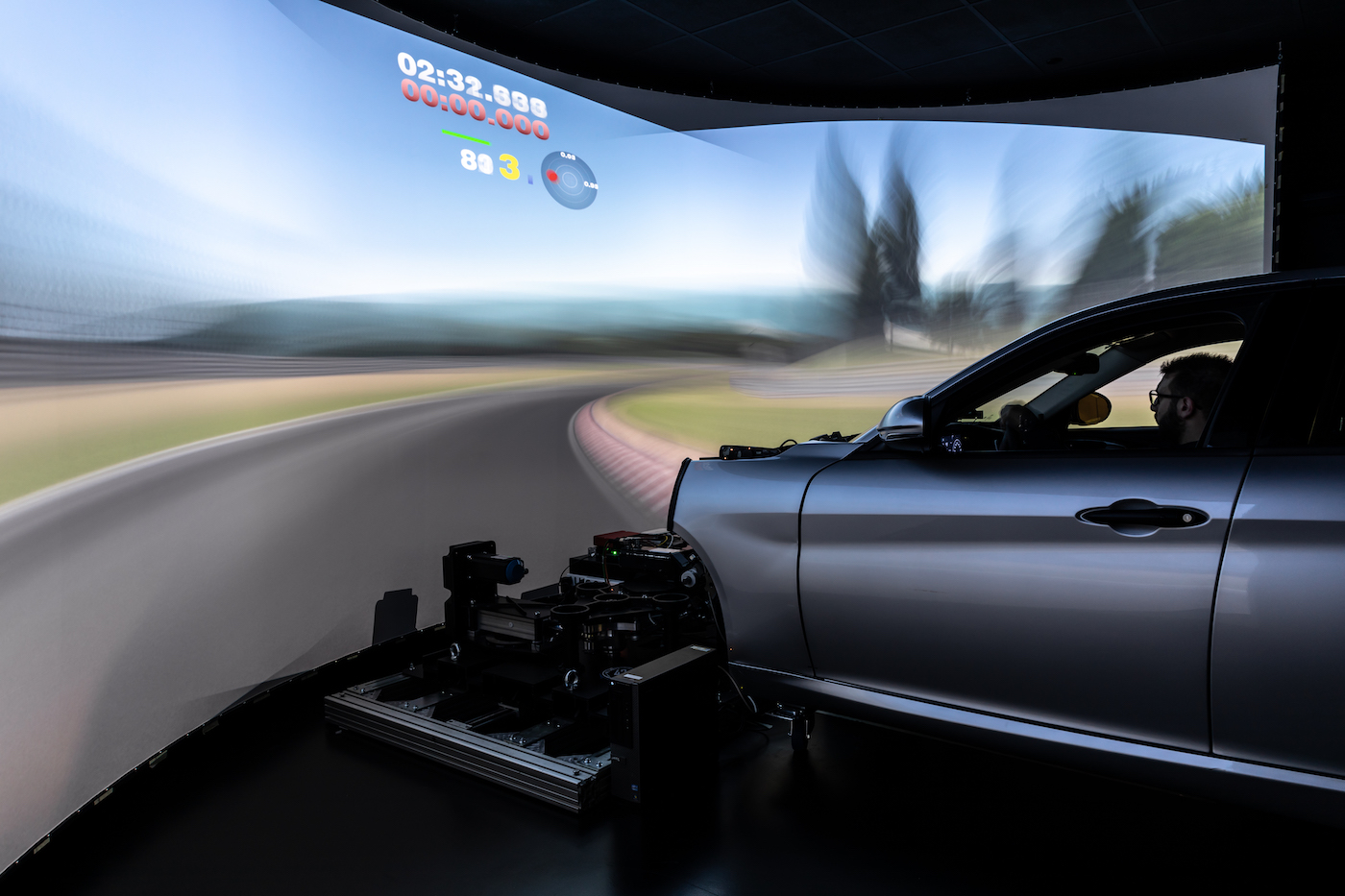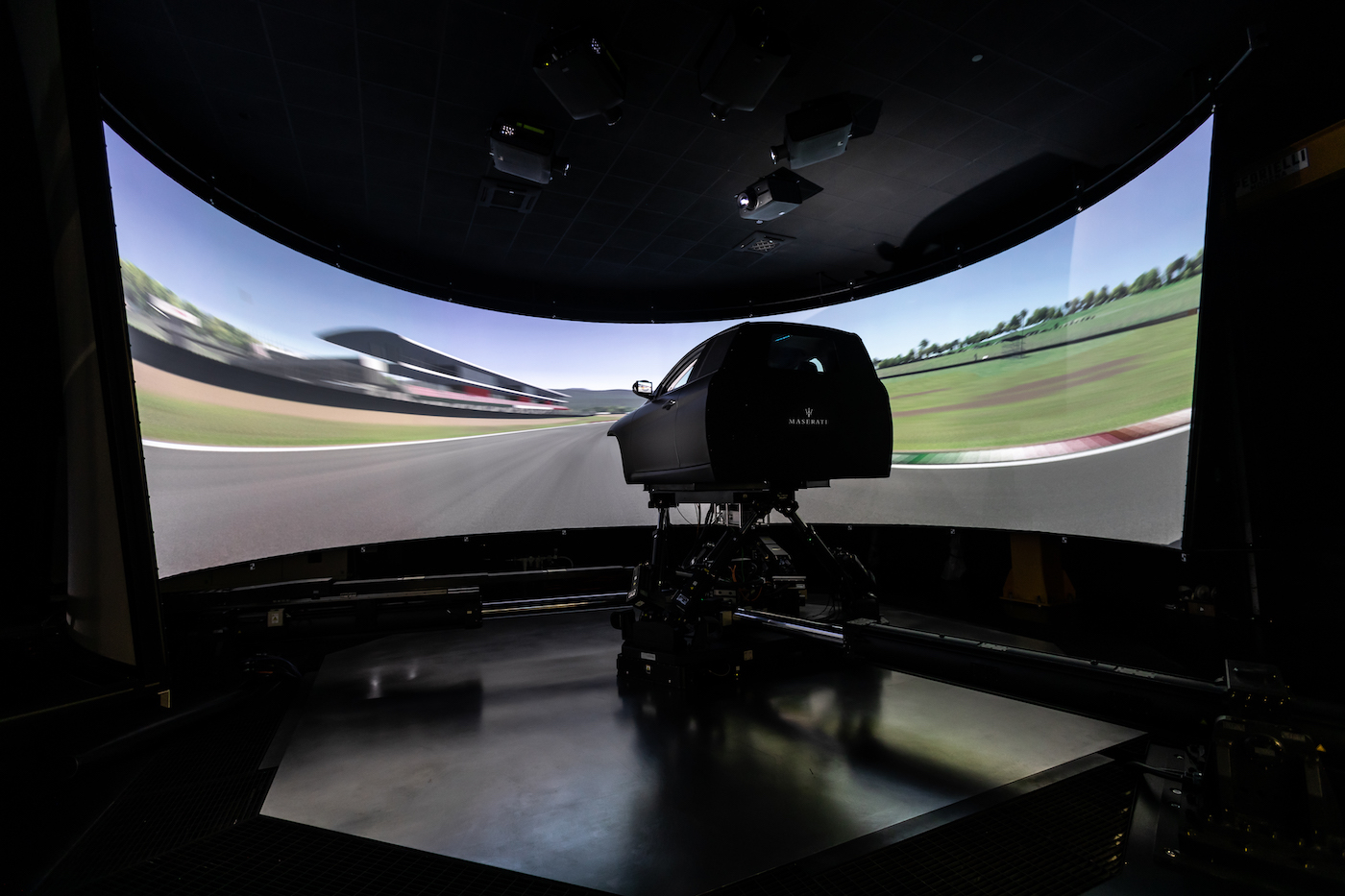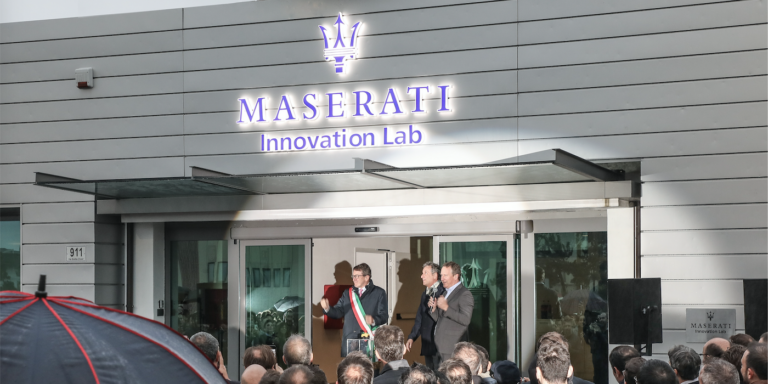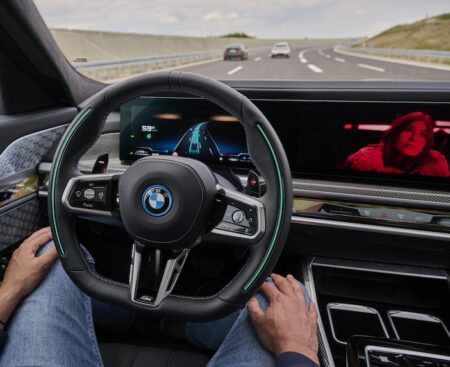Maserati has offered a glimpse into the facilities at its Innovation Lab, a location that since it opened in 2015, has been an exclusive and off-limits location. The lab, located on Via Emilia Ovest in Modena, Italy is at the heart of the marque’s research technology, development and planning.
A key activity at the lab is the use of digital processes that support product development, with this work taking place in three major areas: the Static Simulator, the latest generation Dynamic Simulator featuring DiM (Driver-in-Motion) technology, and the ‘User eXperience’ development labs.
Maserati’s product development hub (or technical department) employs more than 1,500 technicians (divided across the Modena offices on Via Emilia Ovest, Viale Ciro Menotti, Via Delle Nazioni, and at the company’s headquarters at Grugliasco and Balocco). The Via Emilia Ovest site covers 33,744 square meters (of which 14,000 square meters are covered and 19,744 square meters uncovered). More than 1,100 people carry out their activities, the majority of which are engineers, representing 17 different countries, and with an average age of around 37 years. Almost half of the employees are under 35 and 20% are under 30. The organisation has grown considerably in recent years, attracting top graduates from the best Italian universities, including those that collaborate with Maserati.
Static Simulator
The Static Simulator is the starting point for every Maserati simulation experience. The system comprises a cockpit, three projectors and high computational power. It is a simple system that helps engineers, from the very initial phase of the development process, to obtain immediate feedback from the driver, and makes a major contribution to new model validation.
Maserati’s engineers ensure a driver-centred strategy even during virtual development, by creating a link between the Hardware In the Loop (HiL) methodology and the simulator. Using this approach, real subsystems such as steering and braking, ABS and ESC can be added into the simulator, to create tests that connect physical and simulated components to provide a test-bed for developing all the characteristics of a new vehicle. Driver assistance systems can be developed, trialled and validated in a safe environment by reproducing the complex scenarios which may arise anywhere in the world.

Dynamic Simulator
The Dynamic Simulator features the latest generation DiM (Driver-in-Motion) technology – indeed the most modern and advanced exemple of the technology that can be found in Europe, according to Maserati. 90% of Maserati’s vehicle development work is carried out using the Dynamic Simulator, which enables engineers to fully exploit systems integration thanks to the evolution of proprietary control strategies, for reduced costs, and a 50% cut in development times. It also helps to reduce the number of prototypes by 40% and ensures that the ‘virtual sign-off’ design is very close to the final product.
With various directions of movement, this simulator generates an accurate driving experience, emulating the driving dynamics of a car in the real world on a wide variety of road surfaces or contexts, including top international racing circuits, which enable engineers to ‘drive’ development vehicles on various racetracks on the same day. Modifications to the vehicle can be made with a few simple clicks, and the system offers quick and simplified analysis of the data gathered.
The majority of simulators feature six actuators in order to offer six degrees of freedom (6DOF). However, Maserati’s dynamic simulator has nine actuators, enabling 3DOF with the lower platform and 6DOF with the upper one. In this way it can offer nine degrees of freedom to accurately reproduce the driving characteristics of a car, for precise analysis of dynamics, driving performance and comfort, all on the same moving platform.
A clever feature of the simulator is that it creates a very thin cushion of air at floor level, which makes the entire platform ‘float’, enabling dynamic, silent and continuous movement thanks to the electric actuators.

The simulator is currently being used to study and emulate the electrified vehicles included in Maserati’s future plans before physical tests become possible. The engineering team is exploring new opportunities offered by alternative propulsion methods and analysing how they can be used while keeping Maserati’s DNA intact. So far, weight distribution and the location of the centre of gravity have already been effectively optimised thanks to the scope for testing hundreds of different configurations. A centralised logic that guarantees all the car’s active contents and its electric traction has also been developed, maximising dynamic performance since the entire car provides an integrated reaction to all inputs from the driver. Particular attention has been focused on exploiting the vast potential of electric motors in terms of power and rapid response.





